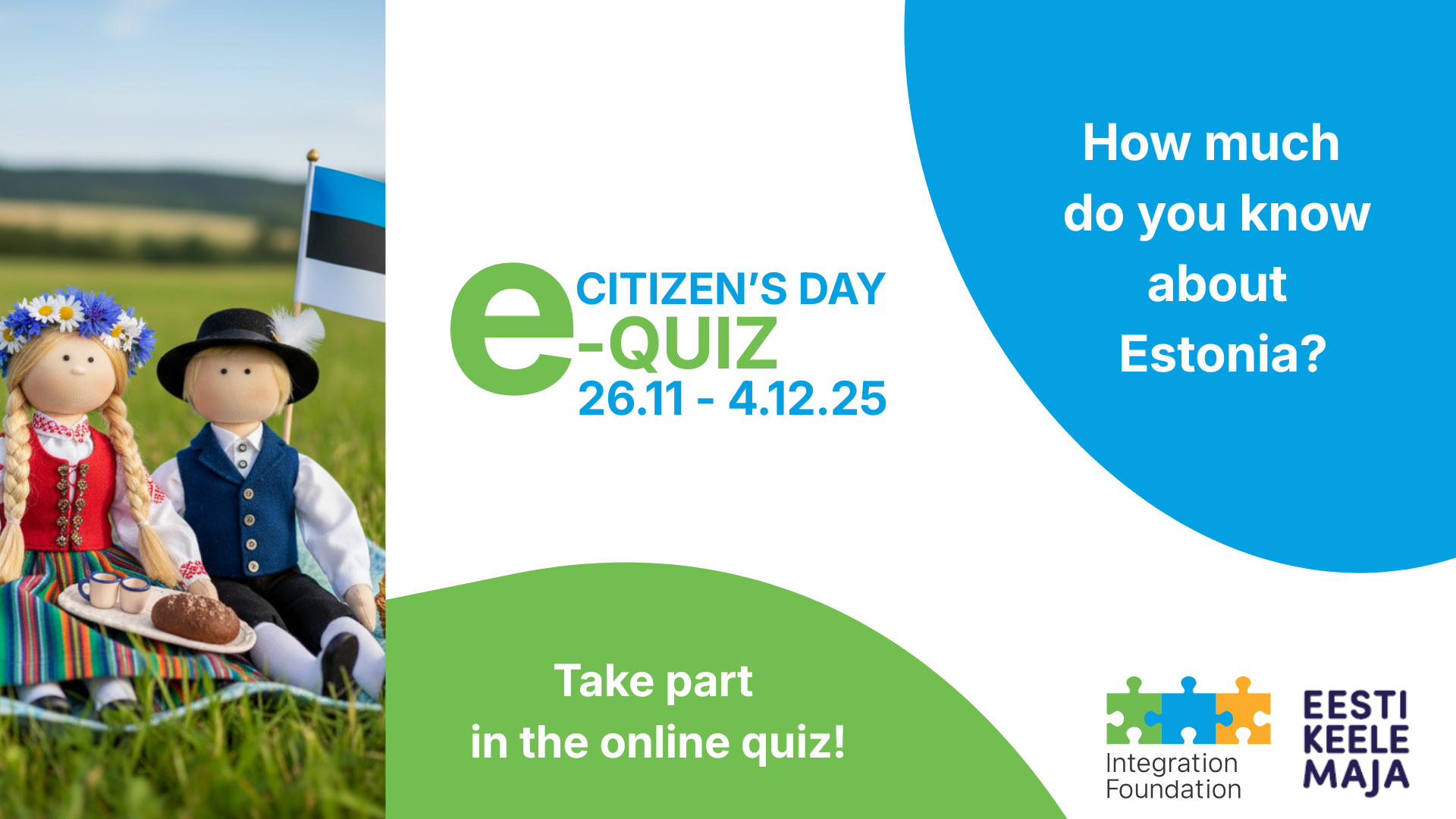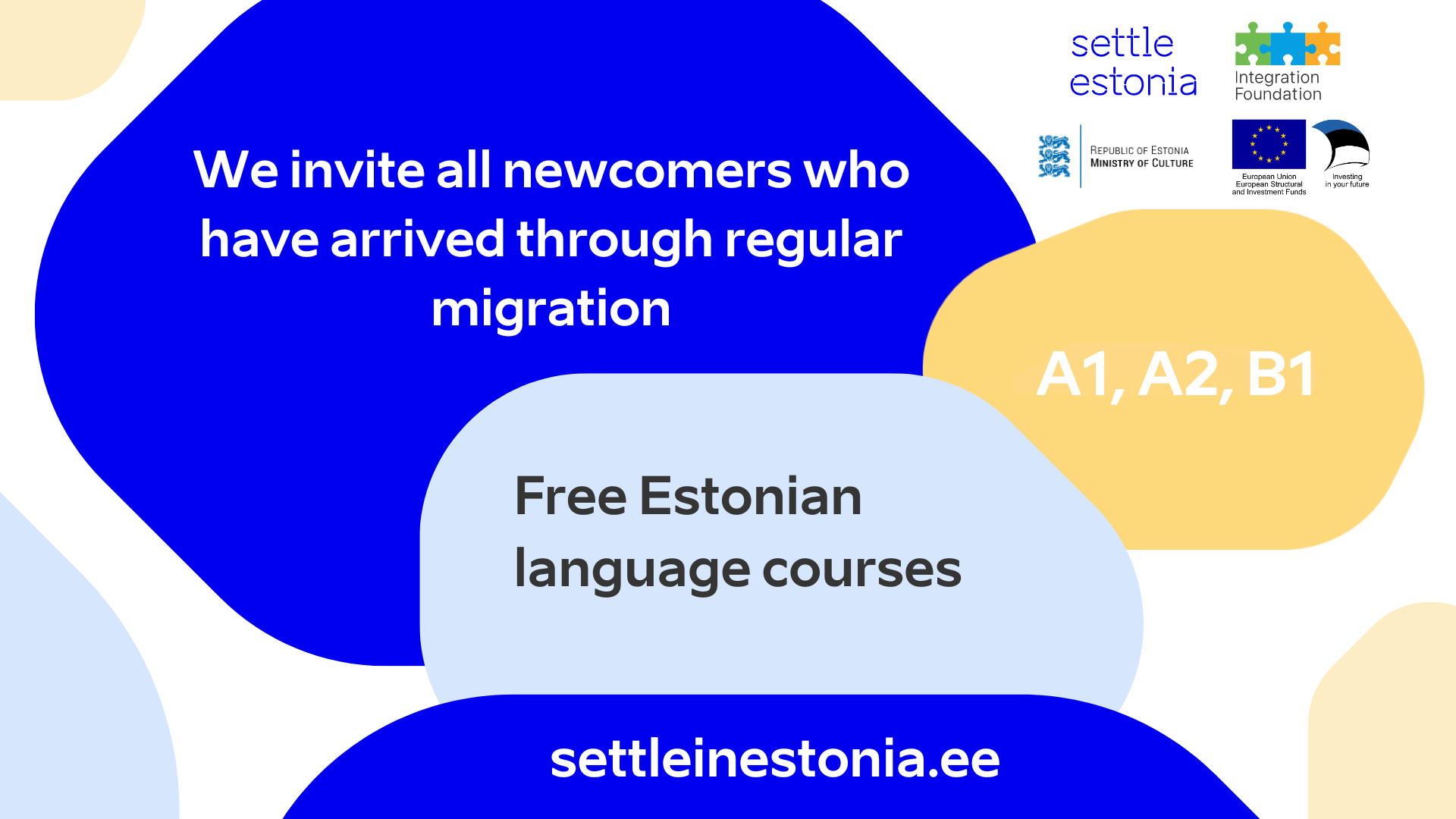In January 2026, two new educational programmes in simple Estonian will begin, offering learners the opportunity to develop their language skills and learn about Estonian culture and society in a museum environment.
You can participate in the educational programme of the Viljandi Museum and the educational programme of Museum Education MTÜ at the Sillamäe Museum, which will take place from January to July in 2026. The programme comprises a total of 70 academic hours, with activities taking place twice a month, mainly at weekends. In total, the educational programme consists of 14 regular meetings plus two days of cooperation with the local community. Each meeting focuses on listening, speaking, reading and writing, using worksheets, exhibits, archival materials and creative tasks.
All educational programmes are prepared and implemented in accordance with the Integration Foundation's guidelines ‘Educational programmes in simple language for Estonian language learners’, which support the inclusion of people with limited Estonian language skills and make the learning experience comprehensible and practical.
The programmes are open to at least 18 years old adult learners of Estonian – newly arrived immigrants, people from different linguistic and cultural backgrounds, returnees, and Estonian citizens.
You can register for educational programmes via the self-service portal of the Integration Foundation at https://iseteenindus.integratsioon.ee/login.
‘Welcome to Viljandi!’ educational programme of the Viljandi Museum
The educational programme introduces participants to Estonian everyday life, culture, and society through the history of Viljandi and its surroundings. The programme focuses on practical language learning, intercultural communication, and learning through experience.
During the programme, participants will learn about the history, cultural heritage, handicrafts, nature, and cultural life of Viljandi and Viljandi County. Simple Estonian is used at every meeting, and activities are structured so that participants can practise the language in real-life situations.
Topics covered in the programme include:
– Estonian history and Viljandi as a historical town;
– the Estonian state, elections, and security;
– the Estonian economy, green transition and digital state;
– cultural heritage and Viljandi as a UNESCO Creative City;
– Handicrafts and folk culture;
– Estonian language, literature, and book culture;
– Theatre, film, and local cultural life;
– Tourism and multicultural Viljandi;
– Mulgimaa and Estonian tribes;
– Estonian nature, forests, lakes, and bogs.
Activities include tours, workshops, guided tours, visits to nature and cultural institutions, and meetings with local partners. An important part of the programme is cooperation days, where participants can interact with local residents and take part in experiential activities in various fields, such as farm work, handicrafts, or folk culture.
At the end of the programme, each participant will summarise their learning journey, and the programme will conclude with a joint tour of Viljandi.
‘Journey Through Time’ educational programme of the Sillamäe Museum
The Sillamäe Museum programme combines Estonian literature, cultural history, and museum education and is based on the theme of 500 years of Estonian books. The programme focuses on the rich cultural heritage of North-East Estonia and Sillamäe, which is explored through exhibits, archival materials, literary texts, and digital resources.
The programme meetings will take place at the Sillamäe Museum (Kajaka 17a). Each meeting lasts four academic hours and consists of four parts. Teaching is conducted in simple Estonian, focusing on practical communication skills.
The programme consists of three parts and two collaboration days:
Part 1: Discovering the history of Sillamäe and North-East Estonia (5 meetings)
You will learn about the main periods in the history of the region: life in fishing villages, the resort town, industrial development, world wars, the uranium plant, the closed city, and regaining independence. Museum exhibits, magazines, films, and documents are used.
The cooperation day ‘Open Doors Day’ includes a museum tour conducted by the participants themselves, and a meeting with the museum director.
Part 2: Creation of the joint exhibition ‘Journey Through Time’ (4 meetings)
Participants develop the concept for the exhibition, select exhibits, and come up with descriptions.
The collaboration day ‘Exhibition Opening’ includes the opening of the exhibition, a tour led by the participants, and roundtable and panel discussions on the past and future of the city.
Part 3: Thematic meetings inspired by the cultural history of Sillamäe (5 meetings)
Topics include, for example, the Kirderannik dialect, Vaivara Parish, Baltic German heritage, the first mention of Sillamäe, and the depiction of the town in films and literature.
The programme includes role-playing, group work, pictograms, exhibits, and archive materials. Each participant collects worksheets and thoughts in their learning portfolio.
The aim of the educational programmes is to support the development of participants’ language skills, increase their confidence in communicating in Estonian, and raise awareness of Estonian culture and society. Practical activities, meetings with the community, and the museum environment make the learning process lively and meaningful.
The programmes are funded by the European Social Fund Plus under project No. 2021-2027.4.07.23-0006 ‘Activities supporting Estonian language learning and civic education’, sub-activity 3.4.4.3 ‘Establishment of educational programmes, including in simple Estonian language, in cultural and sports institutions’.


